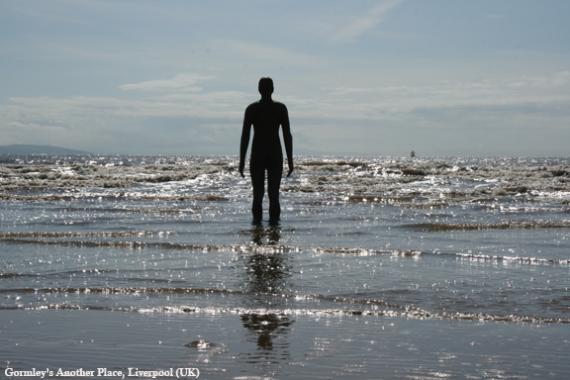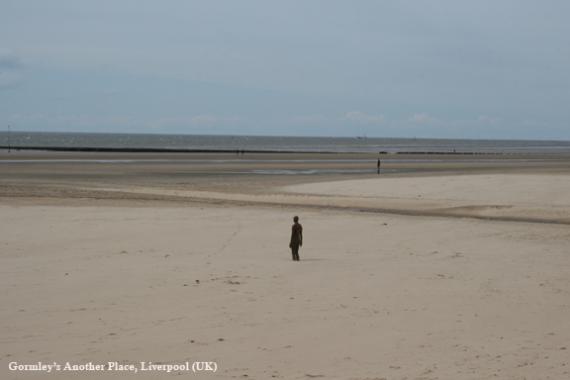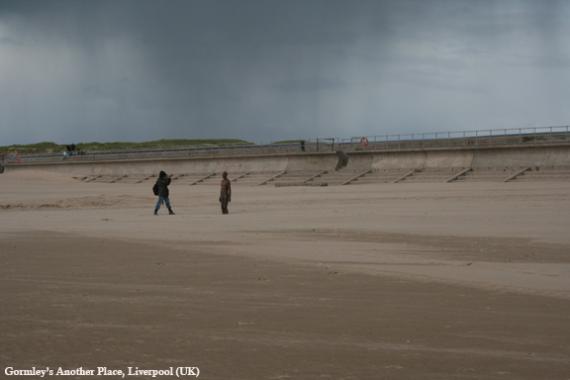
It has been claimed that Antony Gormley is Britain’s most famous living sculptor. I am not sure about the validity of this claim, but I admire his work; particularly ‘Another Place’ collection which started as a temporary exhibition then became a fixed feature of Crosby beach in Liverpool (UK). The collection consists of 100 cast-iron, life size figures occupying three kilometres of the Crosby shore ( BBC:Antony Gormley @ Crosby Beach).
The sculptures are arranged facing the sea giving the illusion that they are watching something, rather than themselves being exhibited. ‘Another Place’ brings a few desired elements under one roof; except that there is no roof! The gallery is an open space that stretches to the horizon in one direction and reaches the sky in another. It has a free admission policy and no age limit. Upon arrival you are guided to walk on the soft carpet of sand whilst being embraced shamelessly by the curator, the breeze. But that is not all; here you can be sinful and actually touch the exhibits. The norm ‘look but don’t touch’ does not apply to this collection. After all, humans generally have ten figures, but only two eyes; at the same time, skin is the body’s largest organ. So one might conclude that humans are programmed to touch more and see less; a feature that seems to be acknowledged and respected by this collection.
My family and I visited Crosby beach a few months ago. I was busy photographing the photogenic sculptures and the ways that people were interacting with them, when we got caught under torrential rain. I packed my camera away and joined others running for cover. As I came to a bend in the pathway, just before losing site of the figures, I turned back and had one last look at the exhibits. Now the shore was virtually empty and rain drops were touching the figures.
























